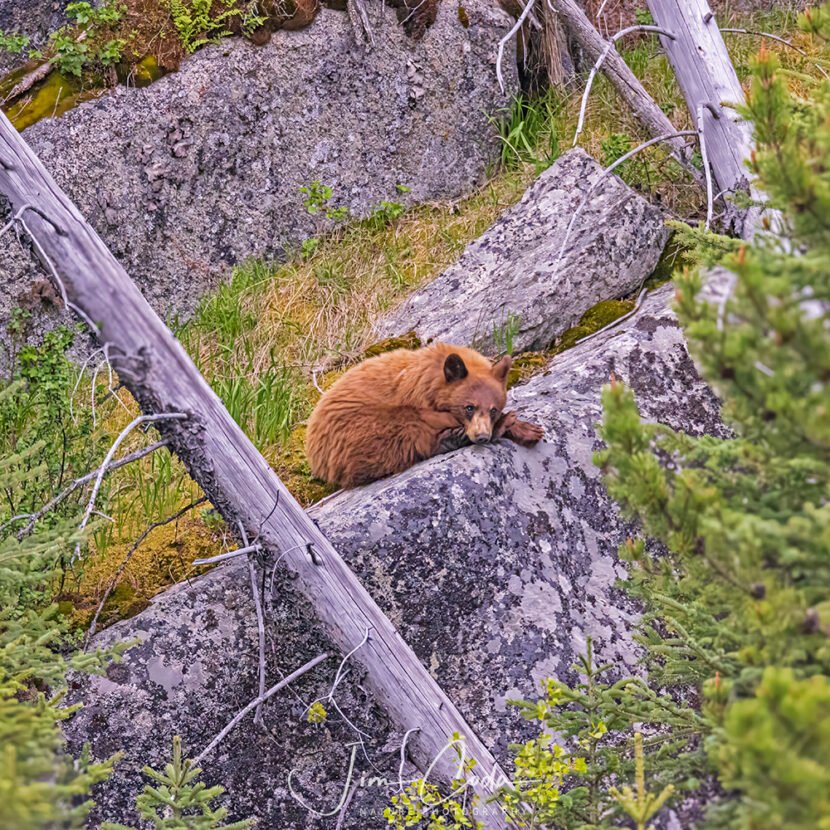Black Bear, Yellowstone National Park

As I was driving into Lamar Valley one afternoon in early June, there were some cars parked along the road where there is a large outcrop just on the other side of the Lamar River. I stopped and asked a fellow what they were looking at and he pointed out this cinnamon-phase black bear, which was presumably asleep. Someone said it might be dead because it hadn’t moved a muscle in the time that person had been watching it. It looked to me like it was in a natural sleeping position so I got my tripod out of the car and put my 800mm lens on it. The bear was over 100 yards away, which meant to me getting good quality photos was going to be iffy, especially with the high ISO conditions. It finally stirred and looked at us. After a while, it got up and walked away.







